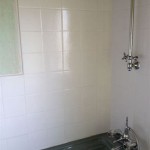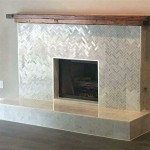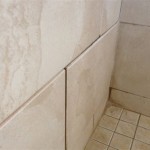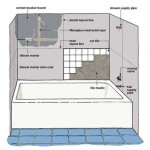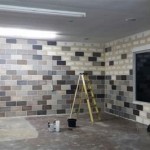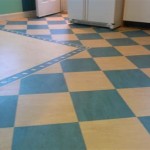Making The Right Choice: Hardwood Or Tiled Floor
Selecting the appropriate flooring for a home or business is a significant decision that impacts aesthetics, functionality, and overall property value. Two of the most popular flooring options are hardwood and tile, each presenting distinct advantages and disadvantages. Understanding the characteristics of both materials is crucial to making an informed choice that aligns with specific needs and preferences.
The decision-making process involves careful consideration of factors such as budget, lifestyle, foot traffic, moisture levels, and desired aesthetic. Examining the nuances of hardwood and tile flooring allows property owners to weigh the pros and cons and determine the best fit for each individual space.
Aesthetic Considerations
Hardwood flooring is renowned for its natural warmth and timeless elegance. The variety of wood species, stains, and finishes offers a wide range of design possibilities, from classic oak to exotic hardwoods. The grain patterns and natural imperfections inherent in wood contribute to its unique character and visual appeal. Hardwood floors can complement a wide range of interior design styles, from traditional to contemporary. They possess an inherent ability to add warmth and sophistication to any room. The natural luster and inviting appearance of hardwood often contribute to an increased property value.
Tile flooring, on the other hand, presents a more diverse array of aesthetic options. Available in numerous materials such as ceramic, porcelain, stone, and glass, tile offers unparalleled design flexibility. Tile can mimic the appearance of wood, stone, or other materials, providing the desired aesthetic at a potentially lower cost or with enhanced durability. The vast selection of colors, patterns, sizes, and textures allows for intricate designs and personalized layouts. Tile is frequently used to create visually striking patterns, mosaics, and borders, enhancing the visual interest of a space. The visual impact of well-chosen tile can dramatically transform the look and feel of a room.
The choice between hardwood and tile depends heavily on the desired aesthetic. For those seeking a classic and natural look, hardwood is often the preferred choice. For those seeking greater design flexibility and the ability to replicate various textures and patterns, tile provides a wider range of options.
Durability and Maintenance
Hardwood flooring is generally durable, but its resistance to scratches, dents, and moisture varies depending on the species and finish. Harder wood species, such as maple and oak, are more resistant to wear and tear than softer species, such as pine. Proper maintenance, including regular cleaning and refinishing, is essential to prolong the life of hardwood floors. Refinishing involves sanding down the surface and applying a new coat of sealant, restoring the floor to its original luster. Hardwood floors are susceptible to water damage and should be protected from excessive moisture. Spills should be cleaned promptly to prevent staining or warping.
Tile flooring is known for its exceptional durability and resistance to scratches, stains, and water damage. Porcelain tile, in particular, is incredibly dense and durable, making it an ideal choice for high-traffic areas. Tile is also resistant to fading and discoloration, maintaining its appearance for many years. Maintenance of tile flooring is relatively simple, requiring only regular sweeping or vacuuming and occasional mopping. Grout lines can be prone to staining and may require periodic cleaning with a specialized grout cleaner. However, overall, tile flooring is a low-maintenance option that can withstand heavy use and harsh conditions.
Considering the durability and maintenance requirements is essential when choosing between hardwood and tile. For areas prone to moisture or high foot traffic, tile is often the more practical choice. For areas where aesthetics are a primary concern and regular maintenance is feasible, hardwood can be a suitable option.
Cost and Installation
The cost of hardwood flooring can vary significantly depending on the species, grade, and finish. Installation costs also vary depending on the complexity of the project and the preparation required. Hardwood installation typically involves securing the planks to a subfloor using nails, staples, or adhesive. Professional installation is generally recommended to ensure proper alignment and prevent issues such as squeaking or warping. The initial investment in hardwood flooring can be substantial, but the long-term value and aesthetic appeal can justify the expense.
Tile flooring costs can also vary widely depending on the material, size, and design. Installation costs can vary depending on the complexity of the pattern and the surface preparation required. Tile installation typically involves applying a thin-set mortar to a subfloor and carefully setting the tiles in place. Grouting is then applied to fill the gaps between the tiles, providing a waterproof seal. Professional installation is recommended, particularly for complex patterns or large-scale projects. While the initial cost of tile may be lower than hardwood, the installation costs can be comparable, especially for intricate designs.
Budget is a significant factor in the flooring decision. While tile can sometimes be more cost-effective initially, the overall cost, including installation, should be considered. Both hardwood and tile can represent a significant investment, and the long-term benefits and lifespan of each material should be factored into the decision.
Suitability for Different Rooms
Hardwood flooring is commonly used in living rooms, dining rooms, bedrooms, and hallways. Its warmth and elegance create a comfortable and inviting atmosphere in these spaces. However, hardwood is generally not recommended for bathrooms, kitchens, or laundry rooms due to its susceptibility to moisture damage. Engineered hardwood, which consists of a thin layer of hardwood veneer over a plywood core, is more resistant to moisture than solid hardwood and can be a suitable option for areas with moderate moisture levels.
Tile flooring is well-suited for bathrooms, kitchens, laundry rooms, and entryways, due to its water resistance and durability. Tile is also a popular choice for outdoor patios and decks in climates with minimal freezing temperatures. Its ability to withstand moisture and temperature fluctuations makes it a practical choice for these areas. Tile can also be used in living rooms and dining rooms to create a modern and sophisticated look. Large-format tiles can create a seamless and spacious feel in these areas.
The specific needs of each room should influence the flooring choice. Moisture-prone areas benefit from the water resistance of tile, while living areas often benefit from the warmth and aesthetic appeal of hardwood.
Environmental Considerations
The environmental impact of both hardwood and tile flooring should be considered. Hardwood flooring can be a sustainable choice if sourced from responsibly managed forests. Look for certifications such as the Forest Stewardship Council (FSC) to ensure that the wood is harvested in an environmentally friendly manner. Bamboo flooring, a rapidly renewable resource, is another sustainable alternative to traditional hardwood. The manufacturing process of hardwood flooring can involve the use of chemicals and adhesives, so it is important to choose products with low volatile organic compounds (VOCs) to minimize indoor air pollution.
Tile flooring can also be an environmentally friendly choice. Many tiles are made from recycled materials, such as glass, porcelain, or stone. The durability of tile means that it has a long lifespan, reducing the need for frequent replacement. The manufacturing process of tile can be energy-intensive, but some manufacturers are adopting more sustainable practices. Look for tiles with certifications such as LEED (Leadership in Energy and Environmental Design) to ensure that they meet certain environmental standards.
Considering the environmental impact of flooring choices is increasingly important. Both hardwood and tile can be sustainable options if sourced and manufactured responsibly. Choosing products with certifications such as FSC or LEED can help minimize the environmental footprint of the flooring project.
Impact on Home Value
Both hardwood and tile flooring can positively impact a home's value, but the extent of the impact depends on various factors, including the quality of the materials, the installation, and the overall aesthetic. Hardwood floors are generally considered a desirable feature that can increase a home's resale value. The timeless appeal and natural warmth of hardwood often resonate with potential buyers. Well-maintained hardwood floors can be a significant selling point, attracting discerning buyers willing to pay a premium.
Tile flooring can also enhance a home's value, especially in areas such as bathrooms and kitchens. High-quality tile installations can create a luxurious and modern look that appeals to a wide range of buyers. The durability and water resistance of tile are also attractive features that can increase a home's marketability. Tile that mimics the look of more expensive materials, such as stone or wood, can provide a cost-effective way to upgrade a home's appearance.
Investing in quality flooring can be a worthwhile investment that increases a home's value and appeal. Choosing materials that align with current design trends and complement the overall aesthetic of the home can further enhance its marketability.
Long-Term Cost Considerations
When comparing hardwood and tile flooring, it is essential to consider the long-term costs associated with each option. While the initial cost of hardwood may be higher, the need for occasional refinishing can add to the overall expense over time. The cost of refinishing hardwood floors can vary depending on the size of the area and the complexity of the project. Regular cleaning and maintenance are also necessary to prolong the life of hardwood floors. The potential for water damage and the need for repairs can also contribute to the long-term cost of hardwood flooring.
Tile flooring typically has lower long-term costs due to its durability and low maintenance requirements. Tile is resistant to scratches, stains, and water damage, reducing the need for repairs or replacements. Regular cleaning is usually sufficient to maintain the appearance of tile flooring. Grout lines may require periodic cleaning or resealing, but this is a relatively minor expense compared to refinishing hardwood floors. The long lifespan of tile flooring means that it is less likely to need replacement, further reducing the overall cost.
Considering the long-term costs associated with each flooring option can help property owners make a more informed decision. While hardwood may offer a more aesthetically pleasing look for some, the lower maintenance and longer lifespan of tile can make it a more cost-effective choice in the long run.

Hardwood Vs Tile Kitchen Flooring A Comprehensive Comparison Ranney Blair Weidmann

Tile Floors Vs Wood A Head To Comparison Carlisle Wide Plank

Natural Wood Floors Vs Look Tile Flooring Which Is Best For Your House Designed

Ask Maria Can I Combine Faux Hardwood Tile With My Oak Floors Advice For Homeowners

Hardwood Floors Vs Tile Making The Right Flooring Choice For Your Home Dusek Powell Custom Builders

What Type Of Flooring Can You Put Over Ceramic Tile

Best Tile For Kitchen Floor How To Make The Right Choice Welcome Rubi Tools Blog

Porcelain Wood Look Tile Vs Luxury Vinyl Plank An Honest Comparison

Best Wood Look Flooring Options America

Hardwood Vs Tile Kitchen Flooring A Comprehensive Comparison Ranney Blair Weidmann
Related Posts

